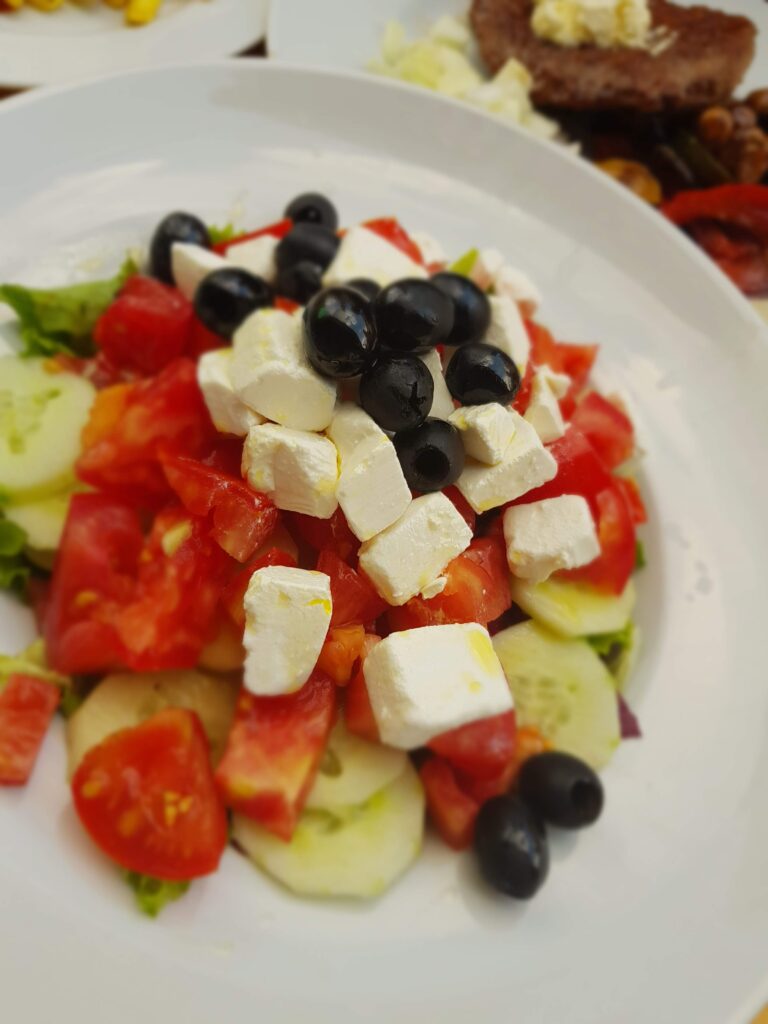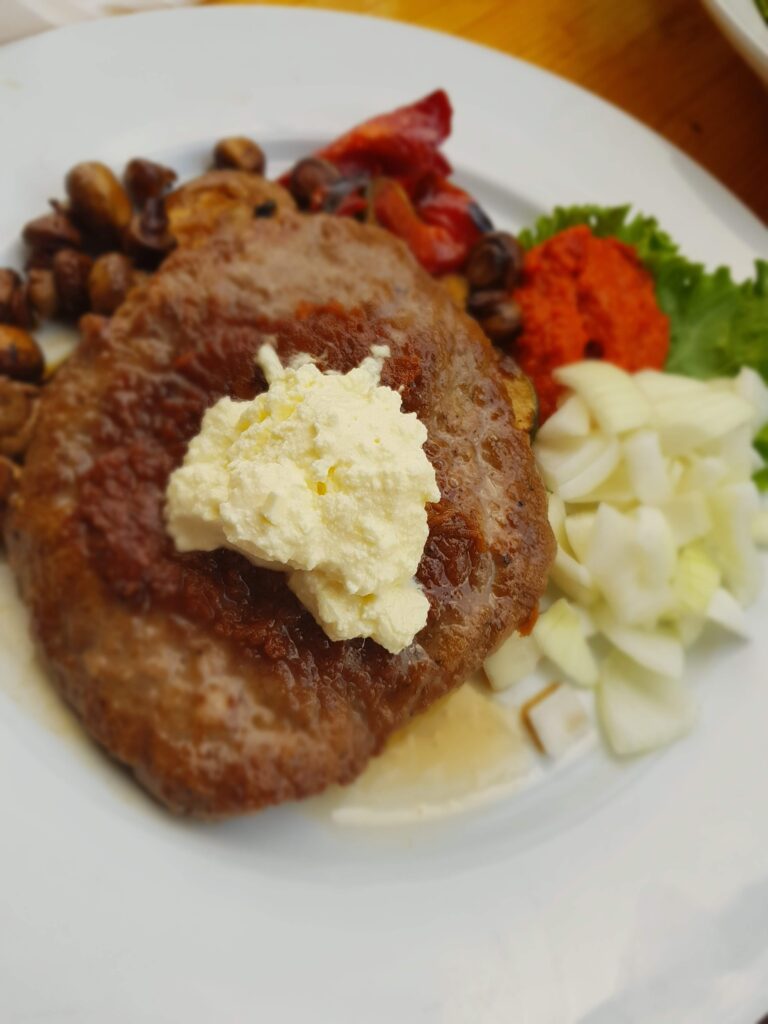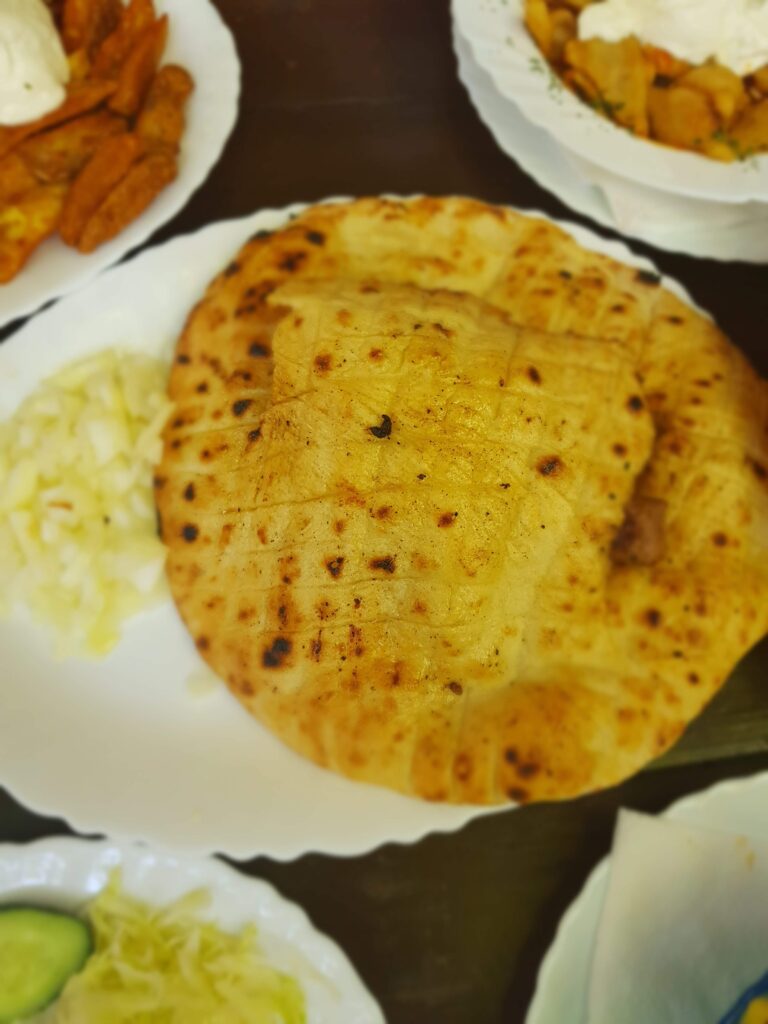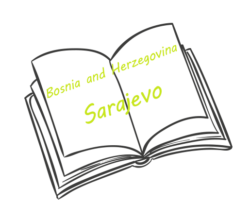
Sarajevo is a city that has been sitting somewhere in my head for many, many years with the thought of seeing it and checking what interesting it has to offer. During my holidays in Croatia, I decided to take advantage of the opportunity and make an optional trip to the capital of Bosnia and Herzegovina.
I started my trip to Sarajevo from the bus square in Split. Travelling by bus around Croatia and neighbouring countries is quite popular, so you can easily find cheap connections. A ticket from Split to Sarajevo costs 156 hrk, which is about £20 by Croatia Bus line (globtour – salinea – jadran express), the duration of the journey is 7 hours and 25 minutes. Poles can cross the border on an ID card, British needs a passport. People who plan to visit Bosnia and Herzegovina by car must remember to obtain a green card, which is a confirmation and guarantee of vehicle insurance in the event of an accident.
I had 24 hours to visit Sarajevo. You can see most of the city’s attractions at this time, as they are practically in the center and on its outskirts. But I recommend staying in the city at least one day longer.
It is interesting that Bosnia and Herzegovina is mainly a Muslim country. Most of its inhabitants are Muslims, 51% of the country’s citizens declare this religion. On the other hand, Sarajevo itself is called to be the European Jerusalem. Four religions (Islam, Christianity, Orthodoxy and Jewish society) intersect in the city itself. The coolest thing is that the whole community lives together, without discrimination on religious grounds.
Old Town
The old town of Sarajevo is the oldest and at the same time the most important historical part of the city. The main point is the Turkish Market, where the whole history of this city begins. It is also worth taking a walk through the narrow streets of the Old Town and feeling the real atmosphere of Bosnian life. Surely everyone will notice and pay attention to the interesting buildings of the city, because the eastern part of the district has Turkish influences, while the western part is of Austro-Hungarian architecture.
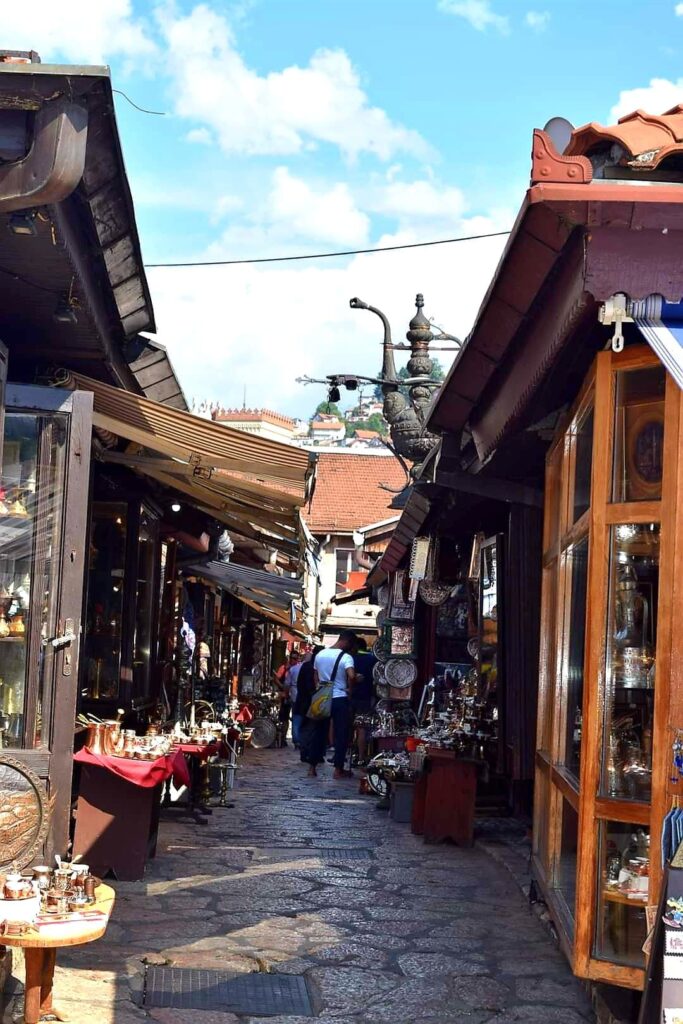
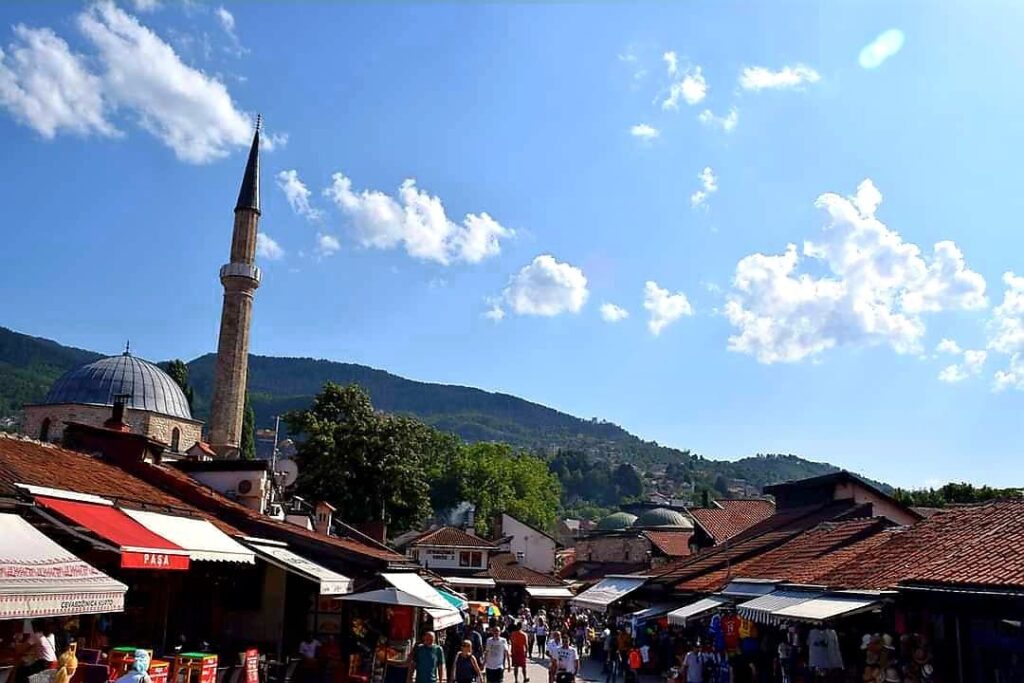
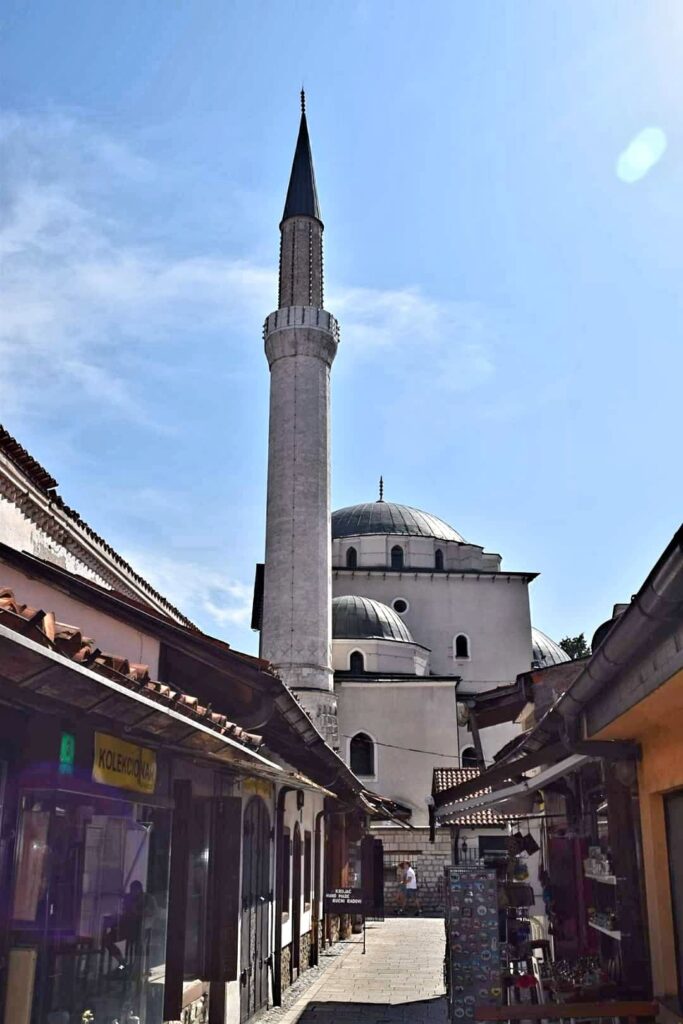
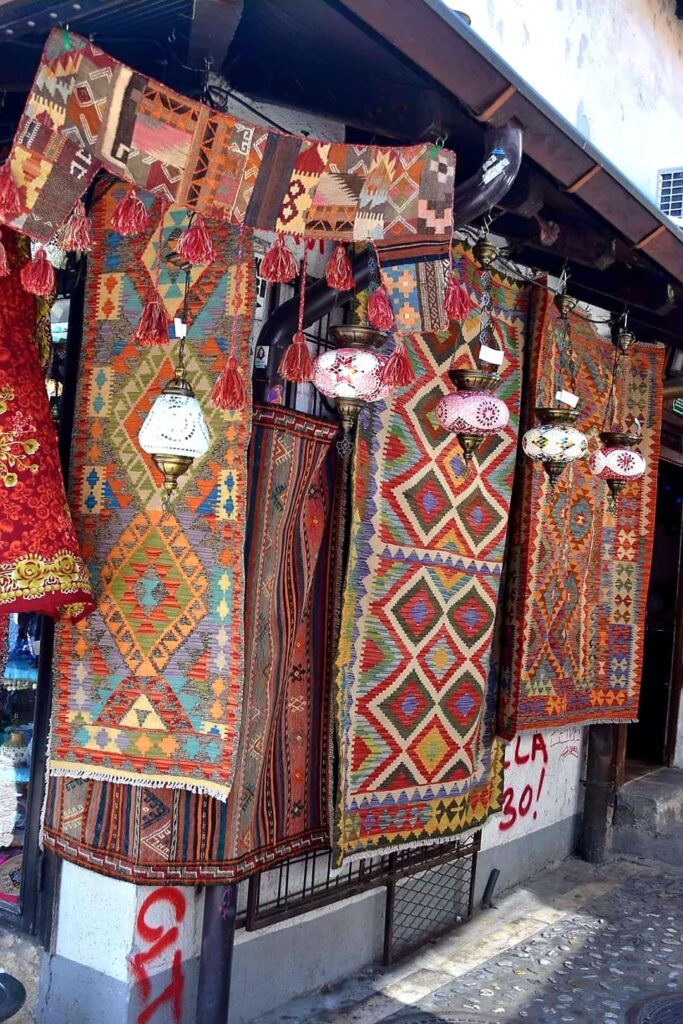
Sebilj openwork well
It is the most characteristic and recognizable point of the city. It looks like a mushroom, it is made entirely of wood, in the Ottoman style, and it was built in 1753. You can drink water from the well, it is a great alternative on hot days.
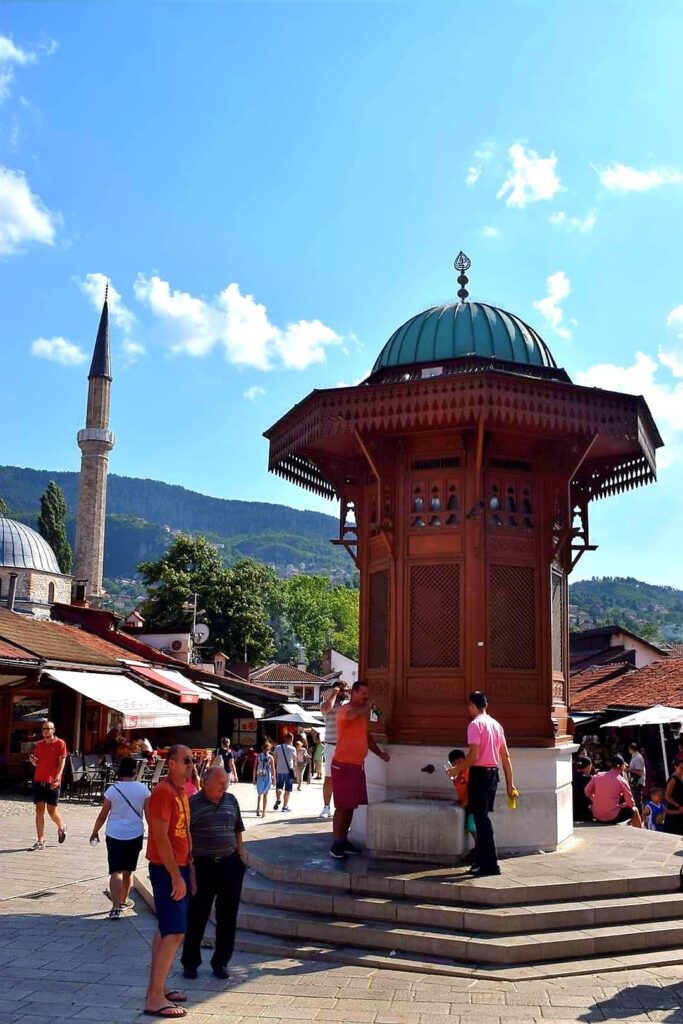
Bascarsija
It is part of the old town of Sarajevo. It is a former market that is cultivated to this day. The shape of the market resembles a circle, and its central point is the above-mentioned Sebilj well. At the market, you can buy souvenirs, lamps, carpets, ceramics, as well as drink delicious coffee, freshly squeezed pomegranate juice or try delicious baklava.
Eternal Flame
It is located at the end of the pedestrian street leading to the old town. The Eternal Fire is a monument located next to the plaque commemorating the victims of World War II. It has been burning almost continuously since 1946.
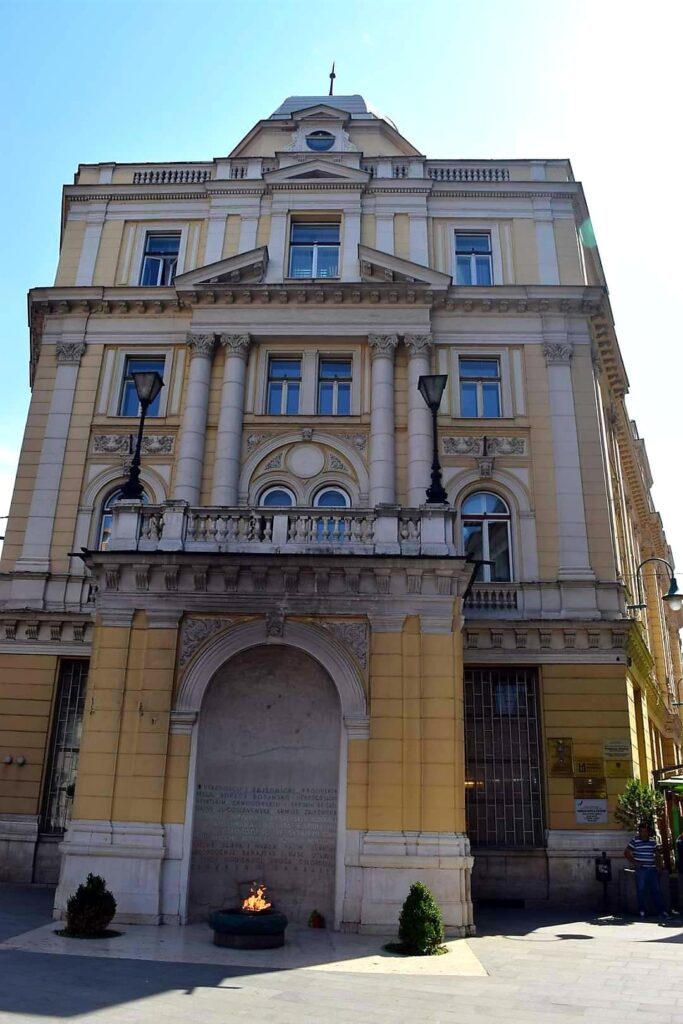
Mosques in Sarajevo
As I mentioned earlier, the main religious cult in Bosnia and Herzegovina is Islam, which is why there are a lot of mosques in the capital of this country. There are about 10 of them in the very centre of the city. They are certainly characteristic points on the map of the city. Wearing appropriate clothes, we can enter the mosque and see how they are decorated.
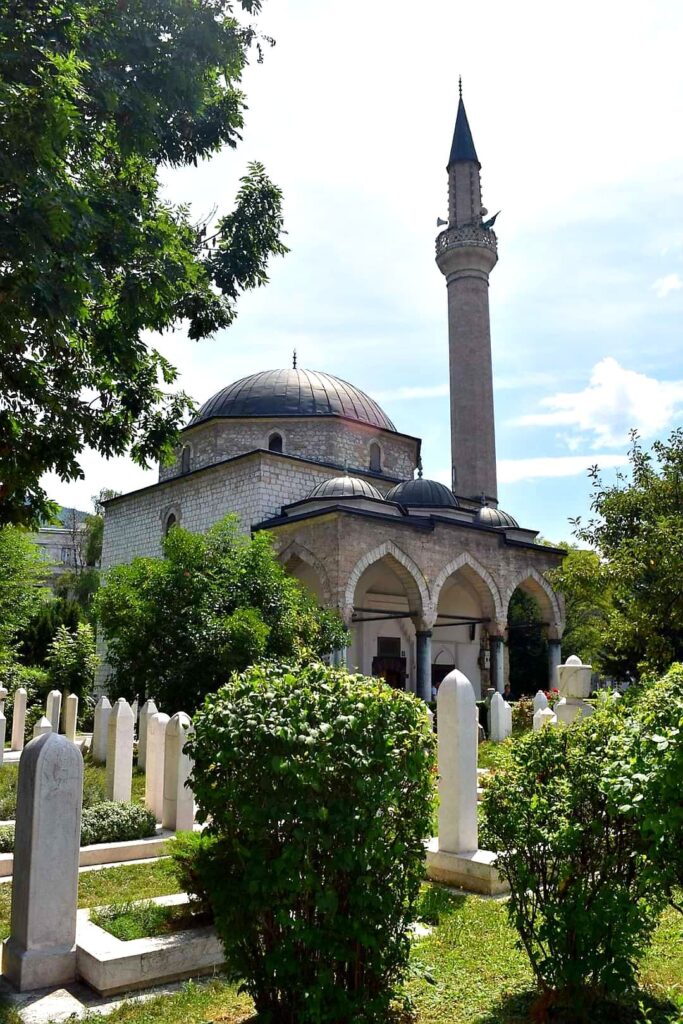
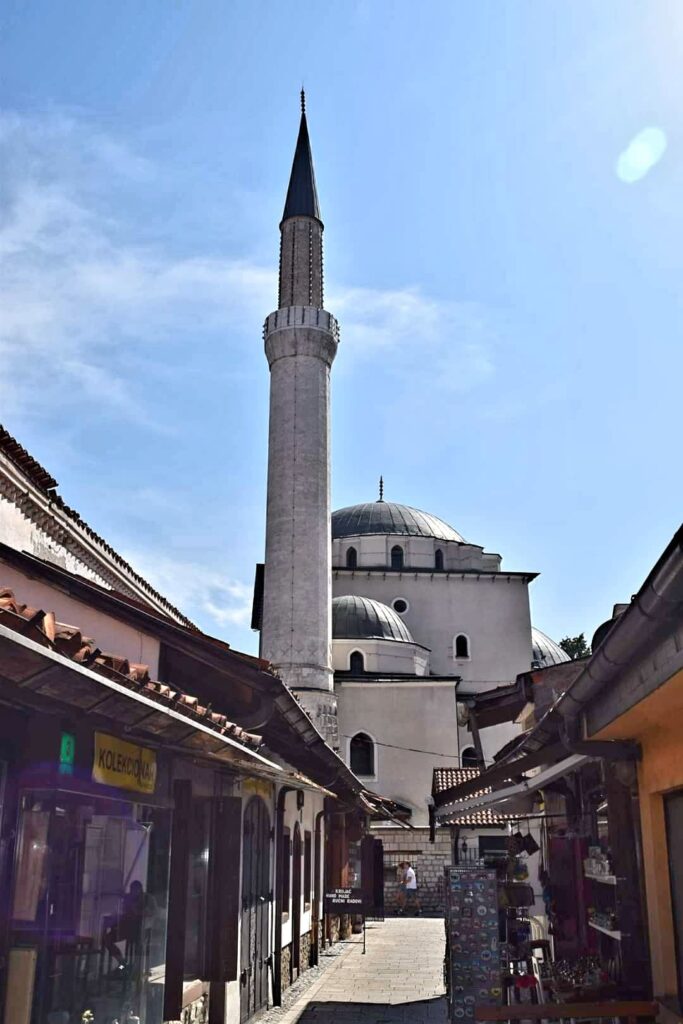
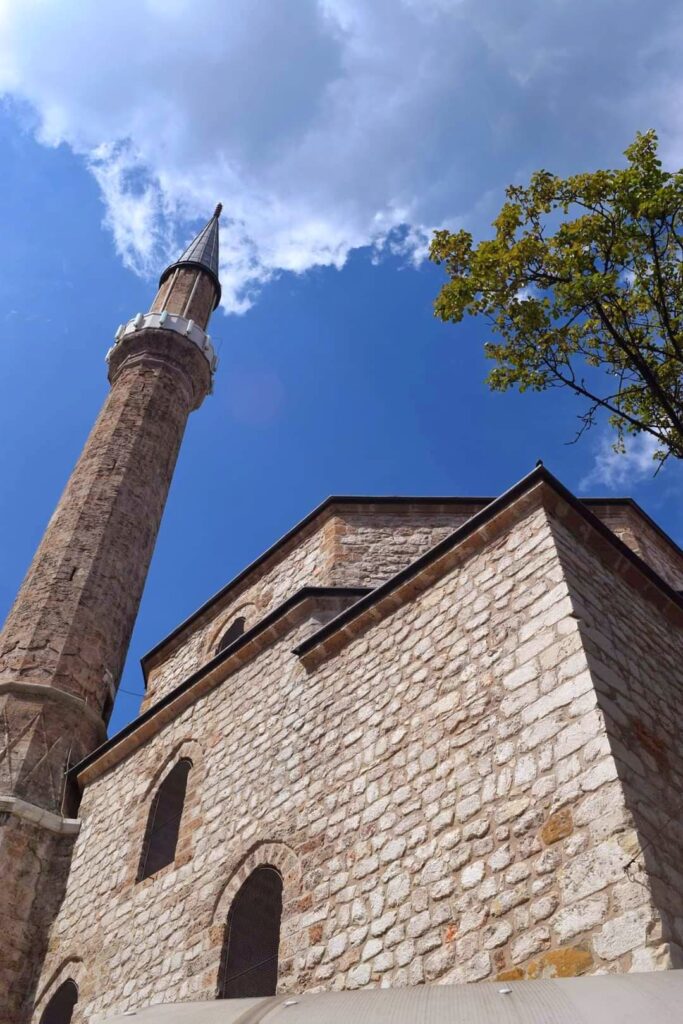
Cathedral of the Heart of Jesus
The Catholic Cathedral of the Heart of Jesus is located on the main promenade. The cathedral was built in the years 1884 – 1889, its author is Josip Vancasa. It is built in the Neo-Gothic style, with two belfries and a rose window above the entrance. It was the first Roman Catholic cathedral in Sarajevo.
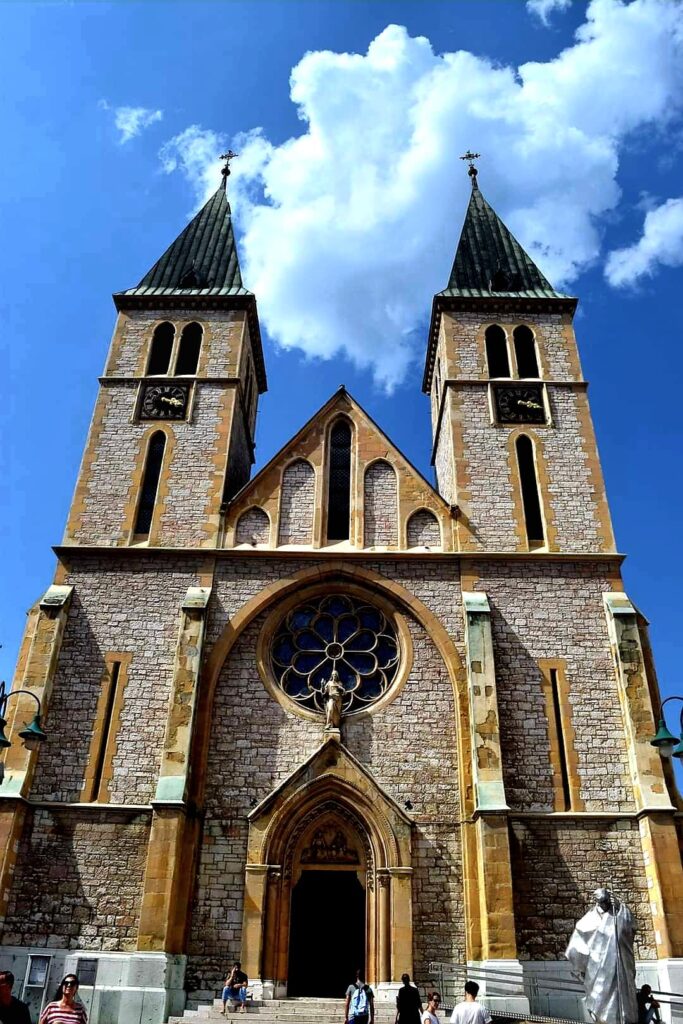
Cathedral of the Nativity of Our Lady in Sarajevo
It is an Orthodox church belonging to the Serbian Orthodox Church. It is the largest church in Bosnia and one of the largest in the Balkans. The style of the church basilica is neo-baroque. The construction was completed in 1874.
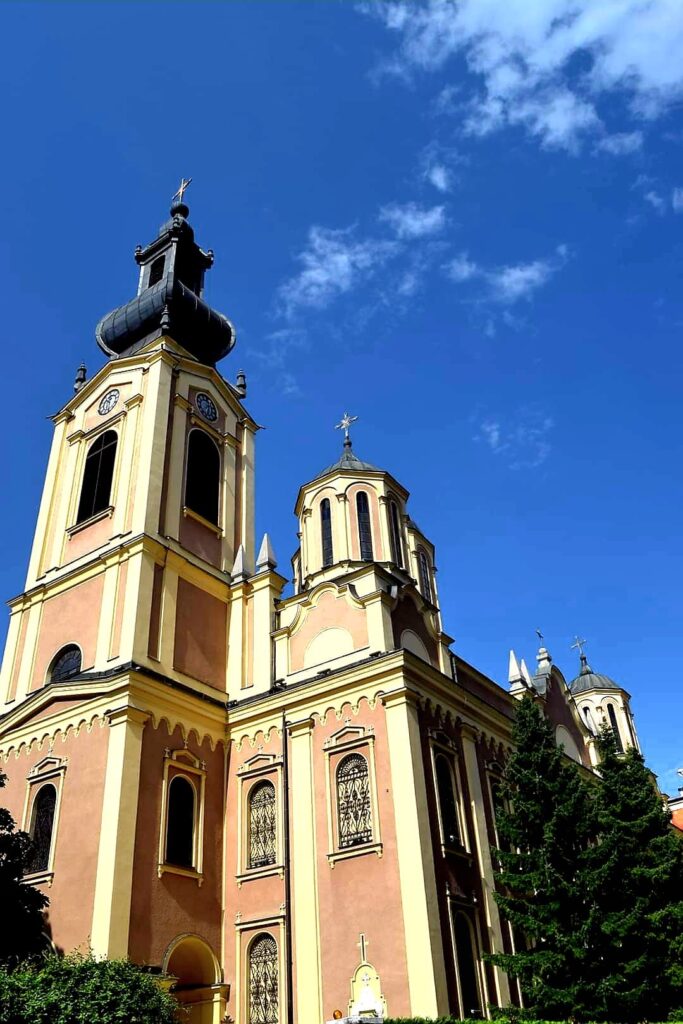
Latin Bridge
Ottoman bridge over the Miljacka River. The event on this bridge was considered the direct cause of the outbreak of World War I – namely, the assassination of the Austrian heir to the throne, Franz Ferdinand Habsburg, was carried out here.
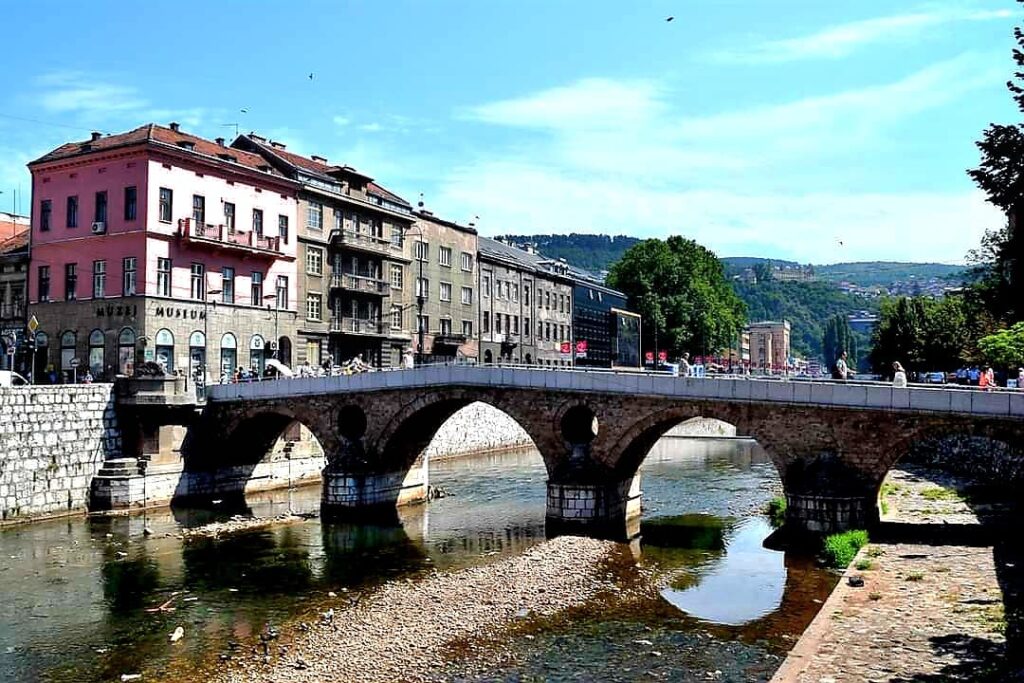

Sarajevo City Hall
The town hall is located right next to the Miljacka River. It was built in 1895 by Aleksander Wittek. There is also a library in the town hall, which unfortunately lost almost 90% of its works during the war in 1992 in a fire that broke out in it.
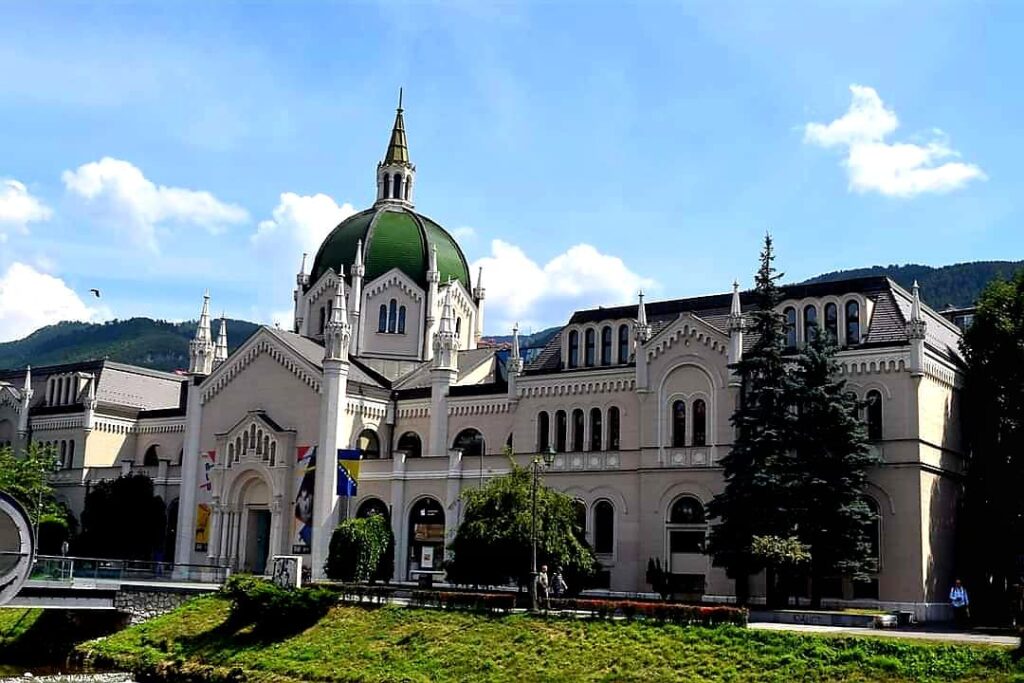
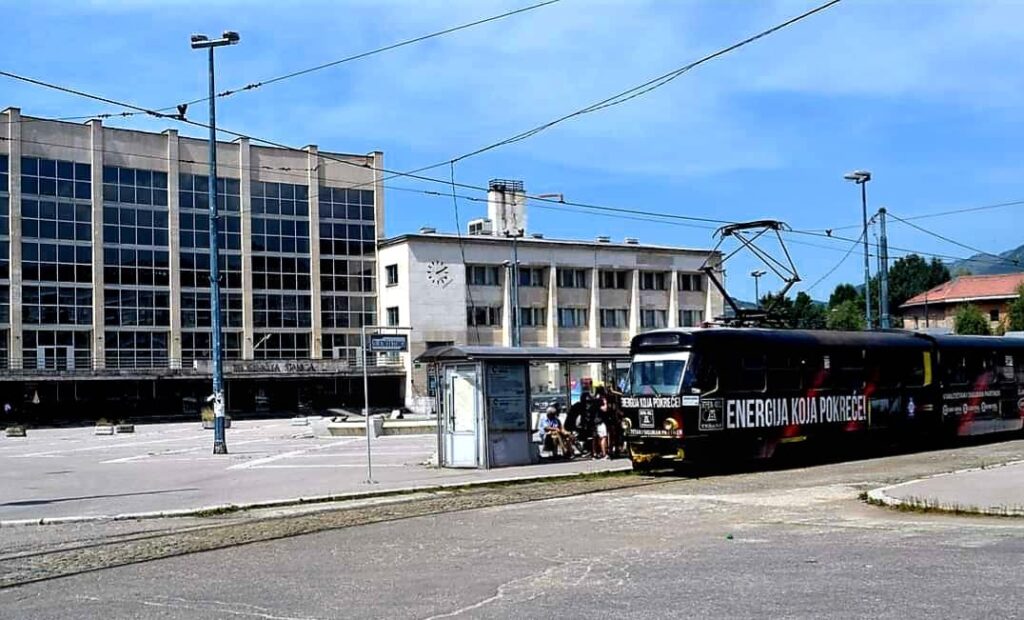
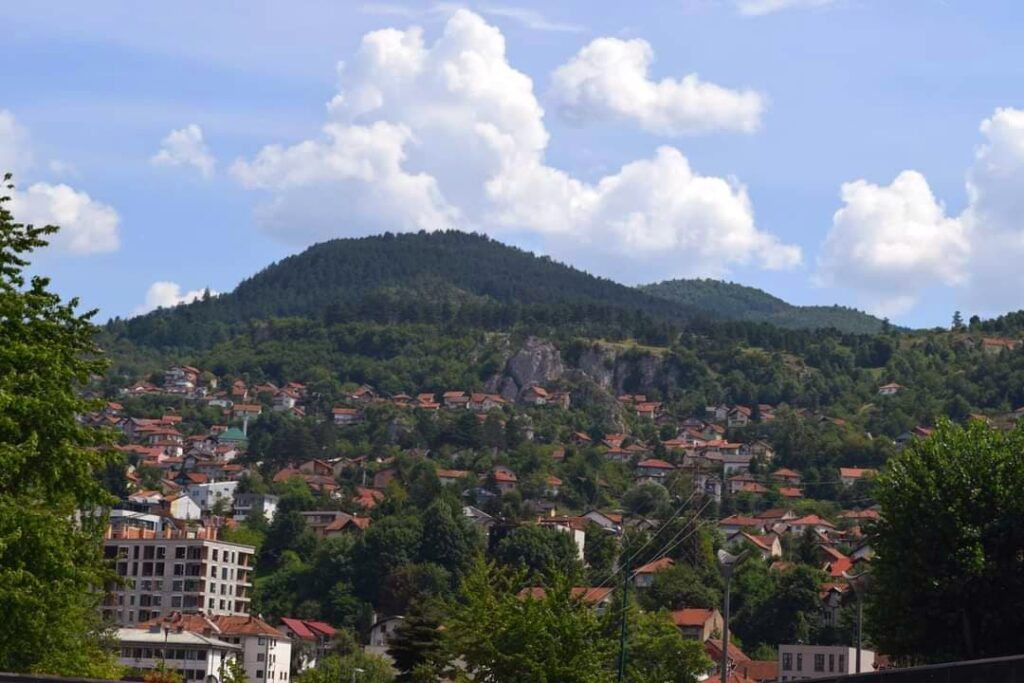
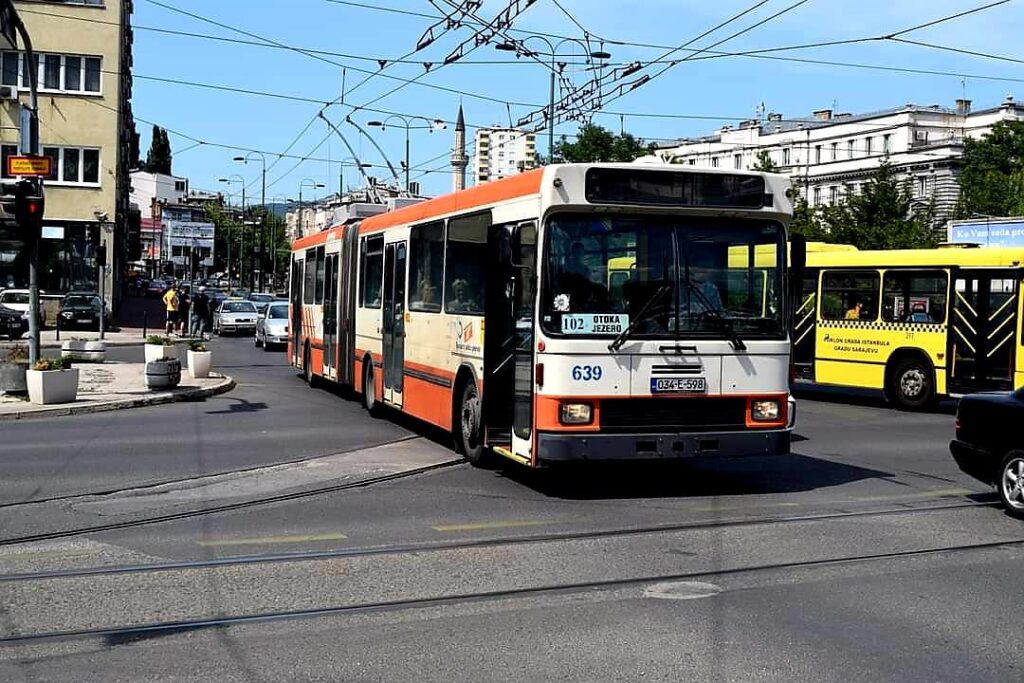
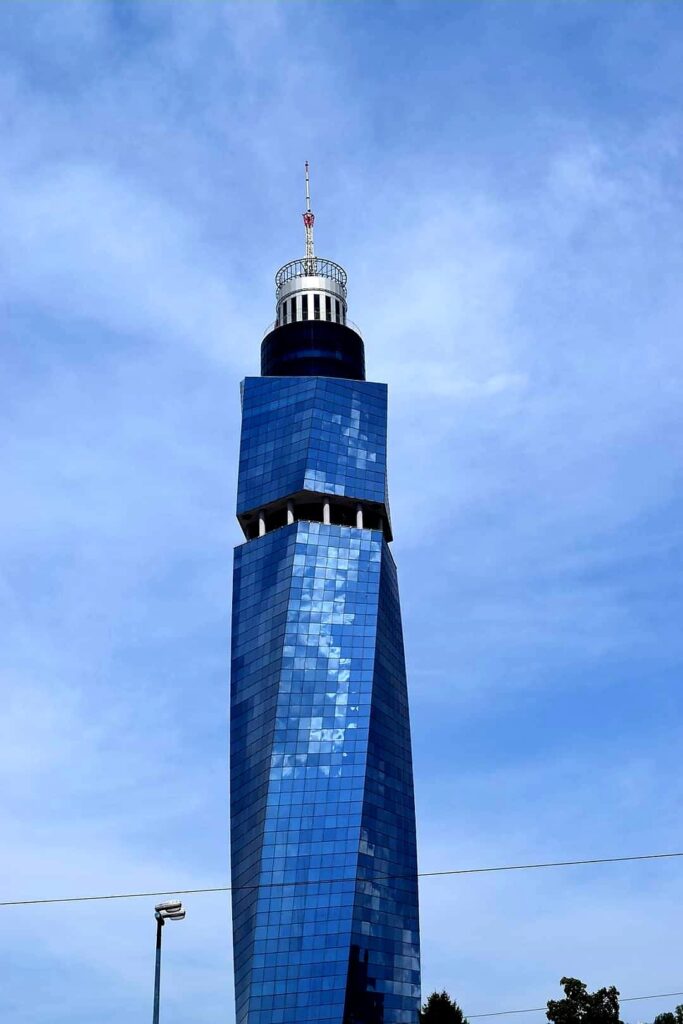
24 hours in Sarajevo, as it turned out, is not enough to see all the attractions of this city. If someone stays longer in this city, it is definitely worth visiting places such as:
- Olympic village – the Olympics took place in Sarajevo in 1984. The wind is already blowing around the Olympic village and sports facilities, but it is a real attraction.
- The funicular to the top of Trebević, supposedly, offers a fabulous panorama of the entire city.
- Jewish Synagogue or Jewish Cemetery
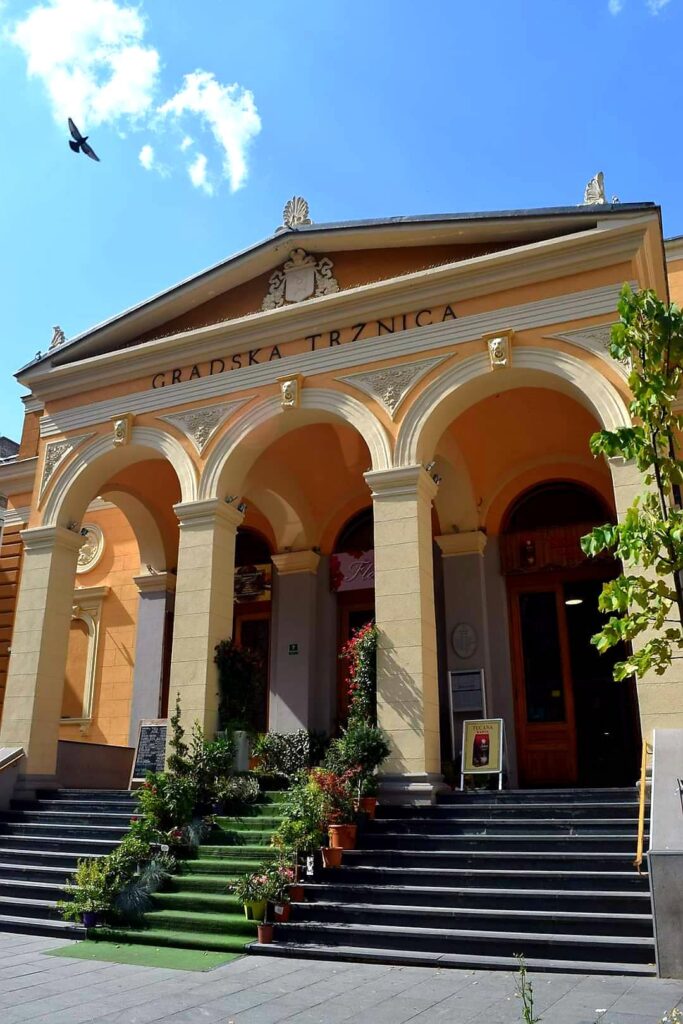
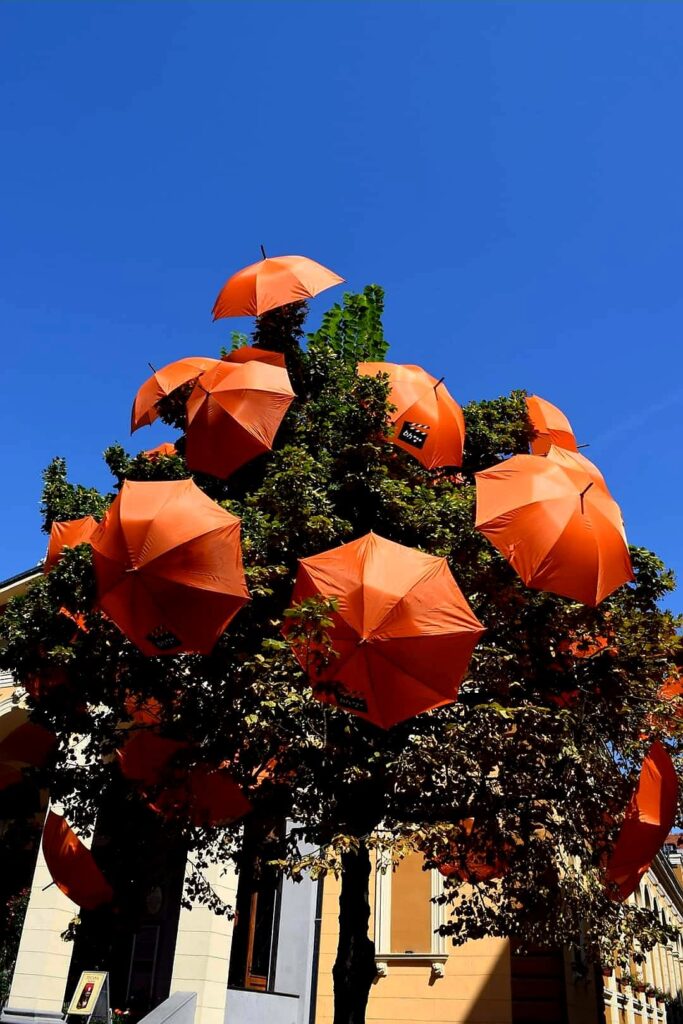
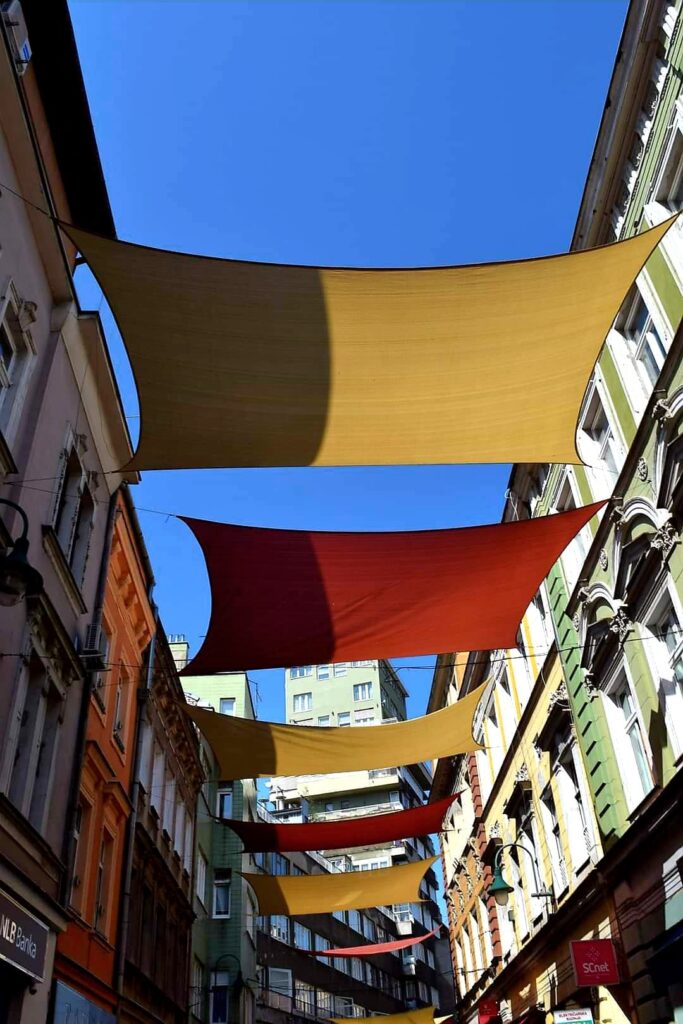
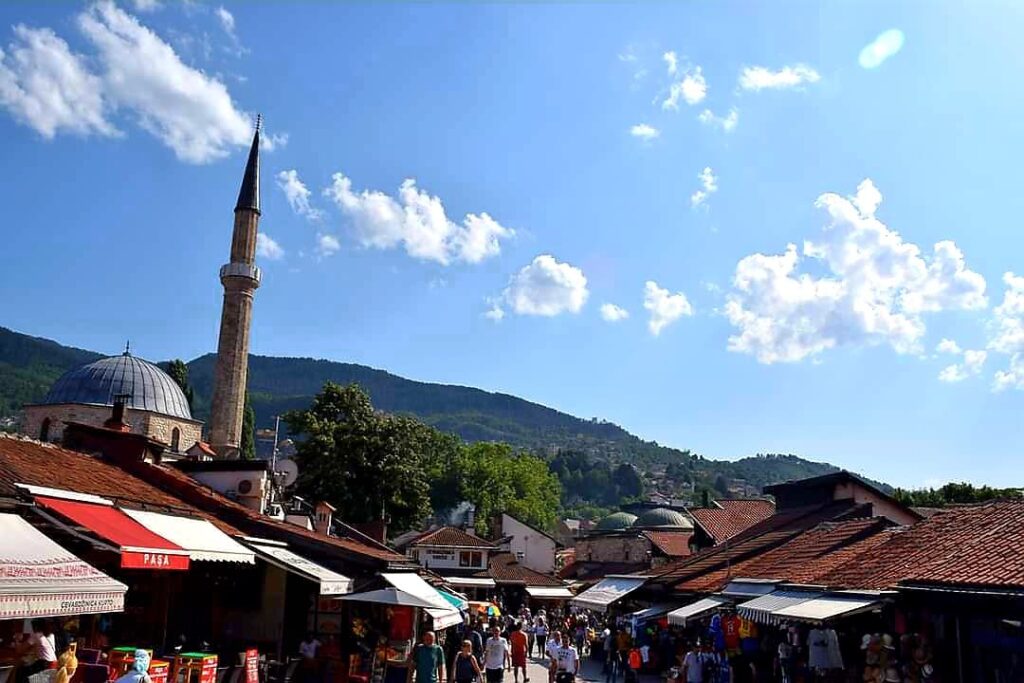
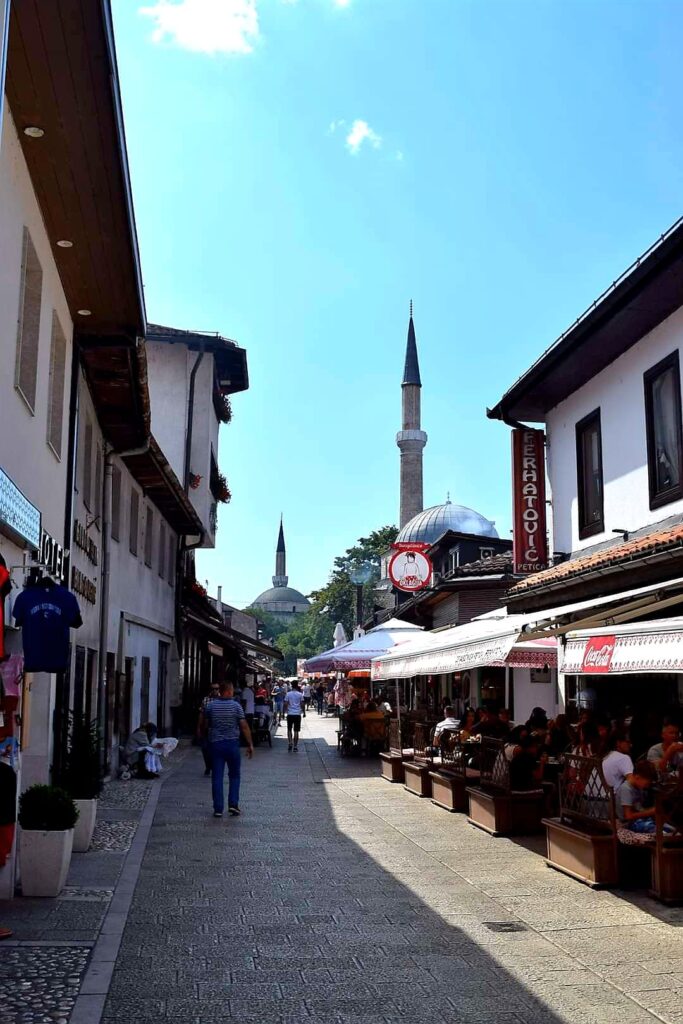
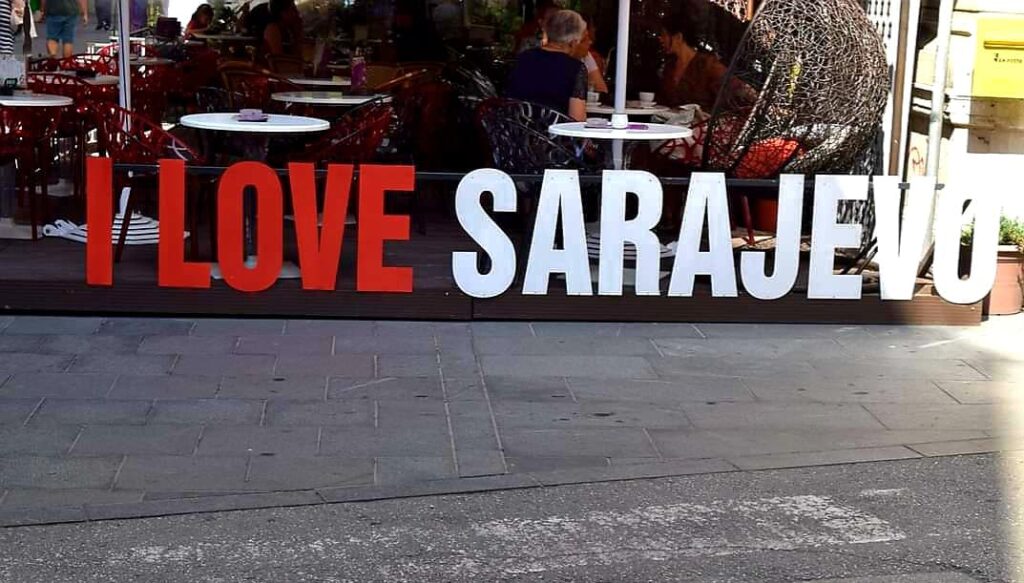
Finally, what I really like… a few words about food. While in the Balkans and also in Bosnia (not only in Sarajevo), you must try their cuisine, which is mainly based on grilling dishes and their sensational seasoning. What’s worth trying? Cevapcici is grilled meat formed into sausages, served in pita bread, often with onions and a salad of tomatoes and cucumbers. Burek is filo pastry stuffed with grilled meat or feta with spinach. Shopska salad is tomatoes, cucumber and cottage cheese similar to feta. Kajmak, baklava, deliciously brewed coffee and squeezed fresh pomegranate juices.
